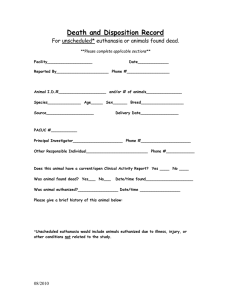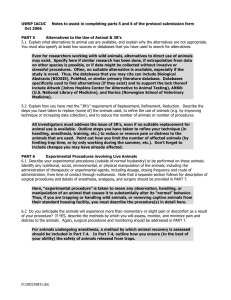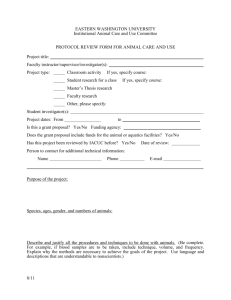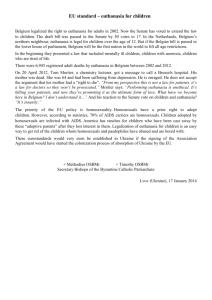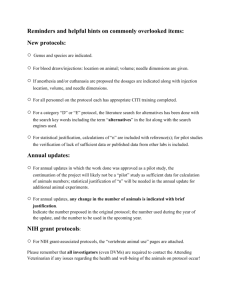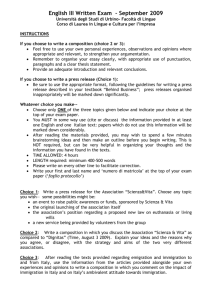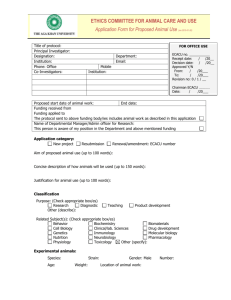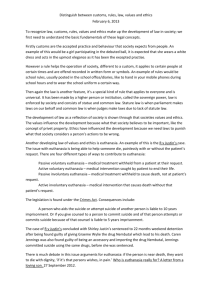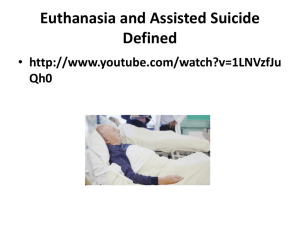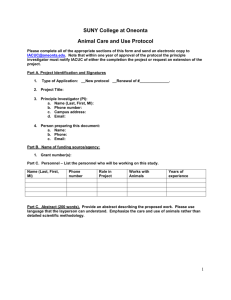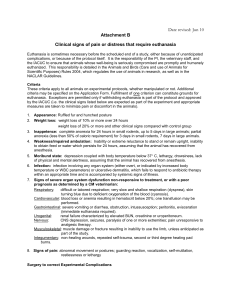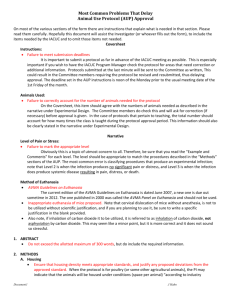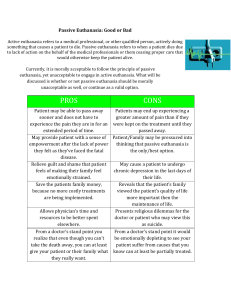IACUC Educational Animal Use Protocol
advertisement
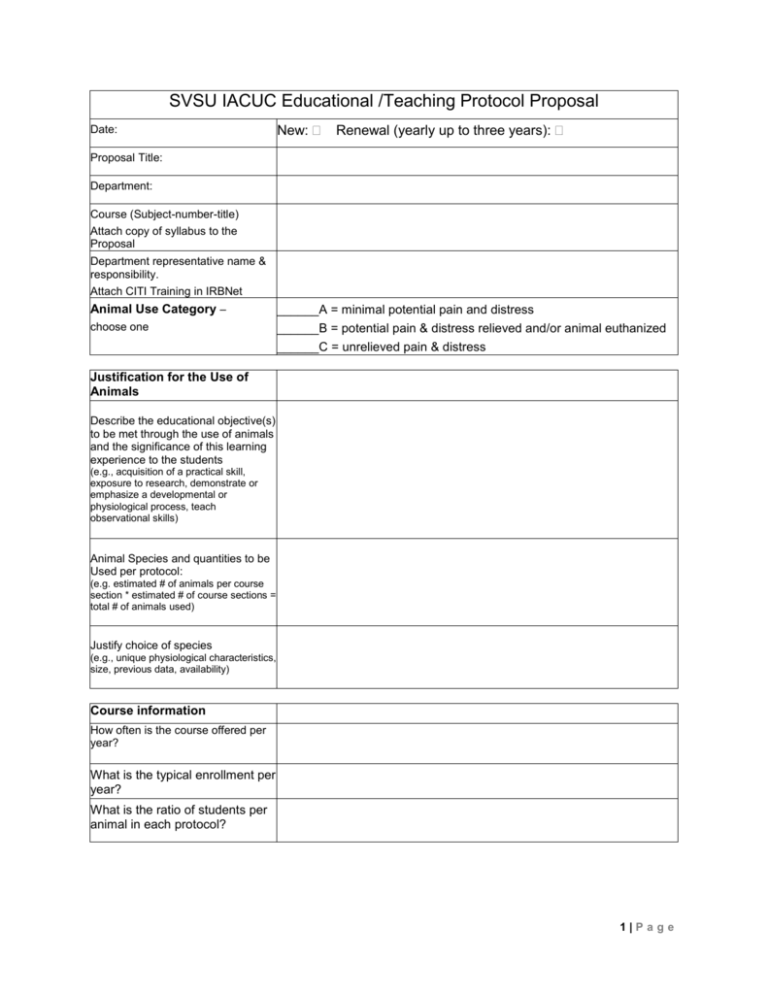
SVSU IACUC Educational /Teaching Protocol Proposal Date: New: Renewal (yearly up to three years): Proposal Title: Department: Course (Subject-number-title) Attach copy of syllabus to the Proposal Department representative name & responsibility. Attach CITI Training in IRBNet Animal Use Category – ______A = minimal potential pain and distress choose one ______B = potential pain & distress relieved and/or animal euthanized ______C = unrelieved pain & distress Justification for the Use of Animals Describe the educational objective(s) to be met through the use of animals and the significance of this learning experience to the students (e.g., acquisition of a practical skill, exposure to research, demonstrate or emphasize a developmental or physiological process, teach observational skills) Animal Species and quantities to be Used per protocol: (e.g. estimated # of animals per course section * estimated # of course sections = total # of animals used) Justify choice of species (e.g., unique physiological characteristics, size, previous data, availability) Course information How often is the course offered per year? What is the typical enrollment per year? What is the ratio of students per animal in each protocol? 1|Page Where (building and room number) will teaching protocols with animals take place, and where will animals be housed? Training/Experience and Supervision Describe the required training/experience (including CITI training), relative to this course, for each instructor. Describe how and when instructor training/experience documentation will be submitted (including CITI training) What will be the ratio of instructors to students during the execution of the protocol? Explain. Animal Procedures (describe for each species) Describe in detail all procedures to be demonstrated by instructors or performed by students (indicate which portions are done by instructor and which by students). Duration of teaching protocol using animals (hours): Euthanasia or Other Disposition of Animals Do animals recover from anesthesia? ____YES,____ NO, or____ N/A If NO, give time (with respect to when teaching protocol starts) and method of euthanasia: If NO, indicate who will perform the euthanasia: If NO, how will the disposal of the carcass(es) will be handled: If YES, summarize post-procedural care describing monitoring of recovery and, if appropriate, analgesia. If YES, indicate when animals will be euthanized following conclusion of teaching protocols: 2|Page Indicate method of euthanasia: Name of euthanasia: person performing How disposal of the carcass(es) will be handled: If animals will not be euthanized, give the method of disposition of the animals (e.g., adopted, transferred, donated): Monitoring for Pain Describe methods of monitoring for pain and suffering: Describe methods of preventing or terminating pain and suffering during teaching protocols: Criteria for euthanasia if unpredicted adverse effects develop during the protocol: Alternatives Offered to Students Will students be required to participate in the protocol using animals? ______YES _____ NO If YES, what are the consequences if a student refuses to participate based on moral, ethical, or other (e.g., religious) concerns? If NO, what alternatives (demonstration, videotape, inanimate modeling) will the student be offered to complete the learning objectives? Regulations/Precautions Indicate how students will be instructed regarding government regulations, concerns, and constraints relevant to the use of animals: Indicate how students will be instructed on the risks (e.g., zoonoses, allergies) associated with the species that will be used (i.e., list the specific health concerns that will be discussed): Describe the personal protective equipment (e.g., gloves, lab coats, safety goggles) the students will be required to use during the laboratory protocols: 3|Page Other Information Please provide information relevant proposal: additional to this 4|Page
